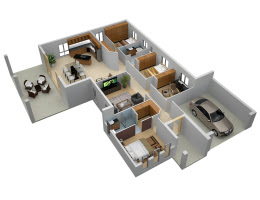OUTSOURCE CREATIVE SERVICES - OUTSOURCE CREATIVE WORKS-OUTSOURCING CREATIVE WORK - OUTSOURCE CREATIVE DESIGN - OUTSOURCE 2D ARTWORKS - 2D ART SERVICES - 2D ART OUTSOURCING - ART OUTSOURCING - OUTSOURCE ILLUSTRATION WORKS - OUTSOURCE ILLUSTRATION SERVICES - OUTSOURCE 3D MODELING - 3D MODEL OUTSOURCING- OUTSOURCING CAD WORKS- OUTSOURCE ARCHITECTURAL SERVICES - BIM - REVIT
Outsourcing vs In-House
Understanding Outsourcing in Architecture
The Basics of Outsourcing
Outsourcing involves delegating specific tasks or projects to external entities, often located offshore. This strategy allows architectural firms to tap into a global pool of talent and resources.
How It Applies to Architectural Firms
For architectural firms, outsourcing can encompass various aspects such as drafting, 3D modeling, and even project management. The goal is to enhance efficiency and reduce costs without compromising on quality.
Exploring In-House Operations
Benefits of In-House Teams
In-house teams provide a high level of control and direct collaboration among team members. Face-to-face communication and quick decision-making are some of the key advantages.
Challenges Faced by In-House Teams
However, maintaining an in-house team can be resource-intensive. Overhead costs and the need for constant supervision pose challenges for smaller architectural firms.
The Pros of Outsourcing for Architectural Firms
Cost Efficiency
Outsourcing often proves more cost-effective as firms can leverage competitive pricing in different geographical locations. This cost advantage allows architectural firms to allocate resources strategically.
Access to Global Talent
Architectural firms can access specialized skills not readily available in their local talent pool. This global talent pool opens up possibilities for innovative and diverse approaches to design challenges.
Scalability and Flexibility
Outsourcing offers scalability, allowing firms to quickly adjust resources based on project requirements. This flexibility is particularly advantageous during peak periods or for handling specialized projects.
The Cons of Outsourcing in Architecture
Communication Challenges
One of the primary concerns in outsourcing is communication. Differences in time zones and language barriers can hinder effective collaboration between the outsourced team and the main office.
Quality Control Concerns
Ensuring consistent quality across outsourced projects requires meticulous oversight. Architectural firms may face challenges in maintaining the same standards they uphold for in-house work.
In-House Advantages and Disadvantages
Tighter Control and Collaboration
In-house teams enable tighter control over projects and foster direct collaboration. This proximity often leads to quicker decision-making and a stronger sense of team cohesion.
Resource Intensity
However, managing an in-house team demands significant resources. From infrastructure to ongoing training, the costs associated with maintaining an in-house team can strain budgets.
OUTSOURCE ARCHITECTURAL WORKS
Striking the Right Balance
Hybrid Models
Many architectural firms opt for hybrid models that combine the strengths of both outsourcing and in-house teams. This approach allows for flexibility while maintaining control over critical aspects of projects.
Tailoring Solutions to Architectural Needs
The key lies in tailoring the solution to the specific needs of the architectural firm. A thoughtful approach ensures that outsourcing or in-house operations align seamlessly with the firm's goals.
Navigating Perplexity in Decision-Making
Identifying Key Decision Factors
When deciding between outsourcing and in-house operations, architectural firms must identify key decision factors. Factors such as project complexity, timelines, and budget constraints play a crucial role.
Overcoming Decision Paralysis
The abundance of options can lead to decision paralysis. Architectural firms must focus on their core competencies and evaluate which tasks are best suited for outsourcing, ensuring a balanced and strategic approach.
Future Trends in Architectural Operations
Tech Integration
The future of architectural operations lies in seamless tech integration. Embracing digital tools and automation enhances efficiency, whether in managing in-house teams or coordinating with external partners.
Evolution of Work Models
As the world evolves, so do work models. Architectural firms must stay agile, adapting to changes in technology, communication, and market dynamics to remain competitive.
Keeping It Simple: Decoding Architectural Jargon
Simplifying Complex Terms
Architecture comes with its own set of jargon that can be intimidating. Simplifying these terms not only makes the content accessible to a broader audience but also enhances communication within diverse teams.
Enhancing Communication in Teams
Effective communication is the backbone of successful architectural projects. Whether outsourcing or managing an in-house team, clarity in communication fosters collaboration and ensures everyone is on the same page.
Analogies and Metaphors: Building the Architectural Bridge
Architecture as a Symphony
Compare the collaborative efforts in architectural projects to a symphony. Each team member plays a unique role, contributing to the harmonious creation of a masterpiece. This analogy resonates with readers, emphasizing the importance of teamwork.
The Architect's Palette
The architect's palette, filled with a diverse array of colors, represents the myriad skills and talents required in the profession. This metaphor highlights the need for a well-balanced approach, whether through outsourcing or in-house operations.
Conclusion
In the dynamic realm of architectural operations, the choice between outsourcing and in-house teams is not black and white. Both avenues offer distinct advantages and challenges. Architectural firms must carefully evaluate their unique needs, considering factors like project scope, budget constraints, and the desire for control.
Striking a balance between outsourcing and in-house operations, possibly through hybrid models, allows firms to harness the best of both worlds. This adaptability positions them to thrive in an industry that demands constant innovation and flexibility.



No comments:
Post a Comment